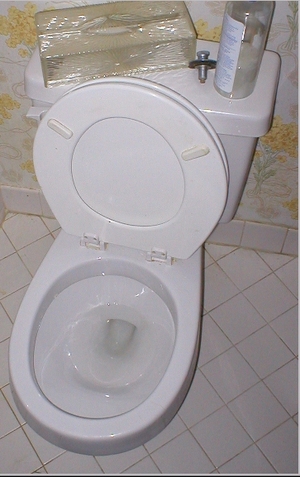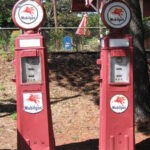When all is well, septic tanks are unseen and forgotten. If your septic tank needs to be pumped, no one in your house will be happy. Depending on how your tank was installed, it may be a simple matter to have it pumped, or you could be in for a major project. A little understanding of how a septic system works will help you understand when it is time to have that septic tank pumped out.
A septic tank does not need to be pumped out when it is full.
Some people believe that septic tanks are giant receptacles that catch your sewage until they fill up. In reality, septic tanks are always full once they are being used. You need your tank to be full so that it will not try to lift out of the ground or be collapsed by the ground pressure surrounding it. The tank has an inlet and an outlet. Water and sewage from your home enters the tank. Bacteria begin the work of breaking it down. Water and sludge exit your tank on the opposite side and goes into your drain field.
When it works right, this flow continues without any intervention being necessary.
The water from your septic tank goes into your drain field and leaches out through perforations into a bed of sand and gravel. Some of it sinks into the soil beneath, but most of the liquid evaporates out through the thin layer of soil above the drain line. A well built septic system might function for many years without being touched.
If the system has a grease trap in front of the septic tank, it can extend the time needed between septic tank cleanings.
Grease is a bane to septic tanks. It floats on top of the sewage in the tank and is not easily broken down for transport to the drain field. Other types of sewage can get trapped in the grease and accelerate the build up. A grease pit is a smaller tank between your home and your septic tank. This pit can be cleaned fairly easily every year or so. It will not stop all of the grease, but it helps.
A septic tank has grease buildup inside most of the time.
Your tank can handle quite a bit of buildup. A layer of grease less than six inches thick will not usually stop a septic tank from doing its job. As this layer gets thicker, it gradually impairs the effluent pipe from draining properly. Depending on the composition of this layer and the construction of the tank, the inlet pipe can also become blocked.
A partially blocked effluent will cause sluggish toilets in your home.
The first real sign that you may need to have the septic tank pumped out is toilets that suddenly stop flushing quickly and easily. The failure of the liquid to quickly exit your tank will cause the buildup inside to increase. Eventually, the effluent will stop working. The septic tank will develop pressure from the incoming water with no place to go.
Your tank has some free space at the top.
This extra room will allow you some give for a short time. The air is compressed to allow more liquid inside the tank. Soon, the layer at the top combined with internal pressure will block all incoming sewage and water. Your toilets, sinks, and appliances that use water will stop draining.
Call for the company with the tank trucks to come and pump out your septic tank.
The problem will not heal itself. You will need to have your septic tank uncovered. If it has a riser from the top of the septic tank to ground level, you will just have to remove the cover. If there is no riser, you will have to find a way to dig down to the top of the tank to find the cleaning port and remove the lid.
It is a good idea to have a riser installed at this point for future needs. If you tank needs to be pumped again within a short time, you may need to consider have your drain field repaired or replaced.




